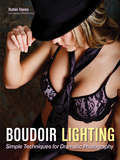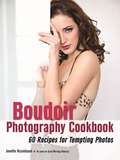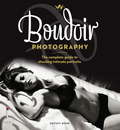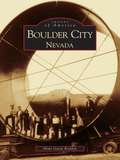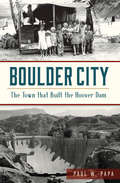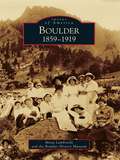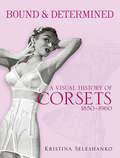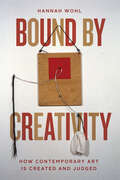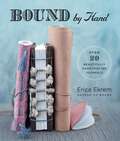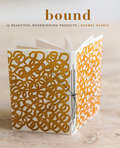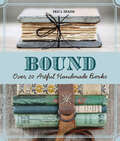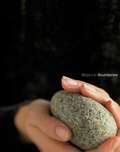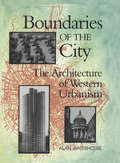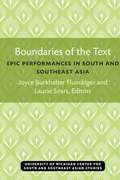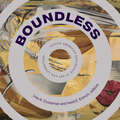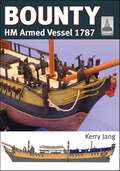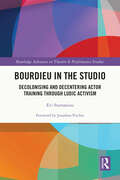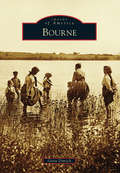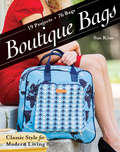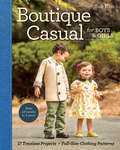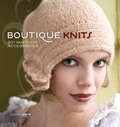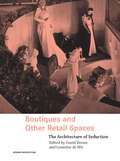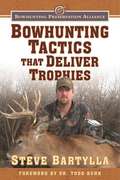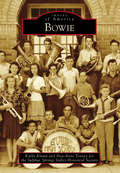- Table View
- List View
Boudoir Lighting
by Robin OwenBoudoir portraits are intimate by nature. The provide an intimate, private look at subjects and are intended for those who have a close emotional relationship with the subject-or in some cases, are made for the subject herself.Creating images that capture the romantic, sensual side of a subject requires a masterful approach. All components of the photography-from the photographer-client relationship, to the setting, to the clothing selection, to the posing and lighting, must be carefully thought out and flawlessly executed.In this book, Robin Owen shows off her uncanny skill at creating 60 sweet and sexy images of women and couples. As you turn the pages, you'll find discussions detailing the artistic approach used to photograph each client-and you'll see alternate shots from the session, which are sure to inspire additional ideas for your own boudoir clients.From one page spread to the next, Olson provides important insights into sculpting the look you are after. You'll learn to work with unexpected lighting configurations and modifiers. You'll find and learn how to create unlikely settings-among many other creative considerations that allow you to create images that stand out from the competition. With a surprising array of image looks to inspire your creativity and targeted technical discussions, this book provides both the impetus and the know-how you're after to get out there and create unforgettable images.
Boudoir Photography Cookbook
by Jen RozenbaumJen Rozenbaum presents sixty essential skills that will help you to fine-turn every aspect of your boudoir shoot. She begins with a look into what qualifies as boudoir, identifies the subgenres of boudoir portraiture, and then launches into a targeted look at various posing strategies that will really amp up your subject's gorgeous curves for a sexy, sultry look. You'll also find a host of image concepts that you might want to incorporate into your repertoire, plus lighting sources and setups Jen favors for creating sizzling shots, and even tips for selecting a wardrobe that downplays perceived flaws and celebrates your subject's assets. Of course, Rozenbaum doesn't stop there. There are even sections on changing up lenses for portrait variety, working with a Lensbaby (a specialty lens that offers a 'sweet spot' of focus), and pulling out all of the stops with today's must-have light source: the Westcott Ice Light.
Boudoir Photography: The Complete Guide To Shooting Intimate Portraits
by Critsey RoweGraffiti Art has blazed a trail across the world, with amazing examples visible in every modern city, but its pioneers were the New Yorkers who painted whole subway cars. <P><P> For a few years in the 1970s and '80s, their creations made New York's subway system a unique, constantly evolving gallery of a new art form - a visual counterpoint to hip-hop and rap music, and a powerful expression of urban culture. It couldn't last; the city authorities made powerful efforts to stop the artists, but their visual inventiveness has left a permanent mark on the urban art landscape. Now, with The Subway Graffiti Sketchbook, today's graffiti artists will be able to go back to the medium's roots and find inspiration without fear of electrocution or arrest. The book contains 54 accurate line drawings of subway carriages, some with color or black-and-white line art on them to help you get started, but most clean and ready for use. The high-grade uncoated art paper enables you to use pencil, paint or marker pen, and the unique concertina binding will allow you to create amazing sequences of customized cars, perfect for display or just honing your skills.
Boulder City, Nevada
by Mimi Garat RoddenThe Boulder Canyon Project Act, authorized by Congress in 1928, designated funds for the construction of the Hoover Dam. This monumental undertaking affected the interests of seven states and is considered by many to be the most significant American public works project of the 20th century. A project of this scope required thousands of workers, and to meet their needs, the Bureau of Reclamation planned the town of Boulder City, Nevada. Today, the planning of Boulder City is recognized as a significant influence on modern city planning. To a country shaken to its roots by the tumultuous effects of the Great Depression, the Hoover Dam project provided two essentials that were in short supply: work and housing. With the planned community of Boulder City, there was yet another benefit--an oasis in the desert, a city with character and charm. From the hot, barren, cactus-covered land rose green lawns and gardens, workers and their families created a new sense of community, culled from their hard work and the massive dam that was rising before their eyes.
Boulder City: The Town that Built the Hoover Dam (Brief History)
by Paul W. PapaIn the depths of the Great Depression, the United States undertook a task so monumental it demanded nearly five thousand people to complete. The Hoover Dam stands as a modern marvel, a testament to America’s ingenuity. However, few know the story of the town that built the dam. To house the workers, Secretary of Interior Ray L. Wilbur envisioned a model of city planning, giving birth to Boulder City. Wilbur intended for the city to be temporary, to disappear once the dam was complete, but it didn’t work out that way. Local author Paul W. Papa offers a unique look at a town that may have been forged by a dam but took on a life of its own.
Boulder: 1859-1919
by Boulder History Museum Mona LambrechtBorn out of the 1859 Pikes Peak gold rush, Boulder sits along the Front Range where the Rocky Mountains meet the plains. Discoveries of gold, silver, telluride, and coal nearby put the little supply town on the map, and early miners, farmers, and businessmen prospered there. The railroad's arrival in 1873 brought more newcomers who cultivated a diverse community full of new businesses, social organizations, and schools, and the town flourished despite the social problems and economic fluctuations that were typical of early mining towns. By the 1890s, education, health, and tourism had become significant to Boulder's economic development, a pattern that continues to this day. Great change came about during the early 1900s in the form of a citywide alcohol prohibition, the influenza epidemic, and the closure of the "Switzerland Trail" railroad in 1919, but Boulder weathered these difficult times even as it witnessed the end of the great railroading era.
Bound & Determined: A Visual History of Corsets, 1850--1960
by Kristina SeleshankoThis revealing history of corsetry ranges from the 19th through the mid-20th centuries to show how simple laced bodices developed into corsets of cane, whalebone, and steel. Lavish illustrations include line drawings and photographs from a diversity of sources, such as clothing catalogs, newspaper and popular magazine advertisements, and magazine articles.
Bound by Creativity: How Contemporary Art Is Created and Judged
by Hannah WohlWhat is creativity? While our traditional view of creative work might lead us to think of artists as solitary visionaries, the creative process is profoundly influenced by social interactions even when artists work alone. Sociologist Hannah Wohl draws on more than one hundred interviews and two years of ethnographic research in the New York contemporary art market to develop a rich sociological perspective of creativity. From inside the studio, we see how artists experiment with new ideas and decide which works to abandon, destroy, put into storage, or exhibit. Wohl then transports readers into the art world, where we discover how artists’ understandings of their work are shaped through interactions in studio visits, galleries, international art fairs, and collectors’ homes. Bound by Creativity reveals how artists develop conceptions of their distinctive creative visions through experimentation and social interactions. Ultimately, we come to appreciate how judgment is integral to the creative process, both resulting in the creation of original works while also limiting an artist’s ability to break new ground. Exploring creativity through the lens of judgment sheds new light on the production of cultural objects, markets, and prestige.
Bound by Hand: Over 20 Beautifully Handcrafted Journals
by Erica EkremCreate a lovely handmade journal that&’s entirely yours, from the cover to the last word, with this how-to from a talented bookbinding author. Following the successful Bound comes this stunning collection of journals from designer and artist Erica Ekrem. Ekrem demonstrates how to craft 21 lovely Old-World–style journals, some using repurposed materials and found objects, and provides instructions for making accessories like tassels and adding decorative inking, stamping, and stitching. Each journal is designed for a specific purpose or hobby, and includes inspiring journaling prompts. Create a water-resistant book bound between two river stones, a refillable booklet perfect for a prolific writer, and a nature journal with a strap to throw over your shoulder.
Bound: 15 beautiful bookbinding projects
by Rachel HazellAn accessible collection of creative bookbinding projects using different techniques for cutting and folding as well as stitches such as ladder, string of pearls and chain. Projects include The Slit Book, A Concertina with Pockets and Multi-Section Softback, which can then be developed further to create unique and personal handmade notebooks, books and keepsakes that are not only fun and satisfying to make, but also make wonderful gifts.So whether you have already tried your hand at bookbinding or are a complete beginner, let Rachel's knowledge and passion inspire you to explore the many possibilities of bookart. Drawing her inspiration from remote landscapes, typography, shorelines, flea-markets and remarkable literary cities, book artist rachel hazell takes people on creative journeys, making books and unfolding stories. Home is the city of Edinburgh and the small Hebridean island of Iona. With The Travelling Bookbinder, she holds bookart workshops across the world, from a palazzo in Venice to a library on Nantucket. Her online courses, PaperLove and BookLove enable people, regardless of location, to develop ideas, imagination and technical skill.
Bound: Over 20 Artful Handmade Books
by Erica EkremBind a book beautifully, with these whimsical and stylish projects from bookbinder extraordinaire Erica Ekrem. With her novel approach to traditional techniques, and the use of repurposed materials, Ekrem has devised creative fun for book artists of all levels. Choose from three categories: Vintage, Nature, and Leather. Make books from mason jars and seashells, a classic leather-bound photo album, and other works of art.
Boundaries
by Maya LinRenowned artist and architect Maya Lin's visual and verbal sketchbook—a unique view into her artwork and philosophy.Walking through this parklike area, the memorial appears as a rift in the earth -- a long, polished black stone wall, emerging from and receding into the earth. Approaching the memorial, the ground slopes gently downward, and the low walls emerging on either side, growing out of the earth, extend and converge at a point below and ahead. Walking into the grassy site contained by the walls of this memorial, we can barely make out the carved names upon the memorial's walls. These names, seemingly infinite in number, convey the sense of overwhelming numbers, while unifying these individuals into a whole.... So begins the competition entry submitted in 1981 by a Yale undergraduate for the design of the Vietnam Veterans Memorial in Washington, D.C. -- subsequently called "as moving and awesome and popular a piece of memorial architecture as exists anywhere in the world." Its creator, Maya Lin, has been nothing less than world famous ever since. From the explicitly political to the un-ashamedly literary to the completely abstract, her simple and powerful sculpture -- the Rockefeller Foundation sculpture, the Southern Poverty Law Center Civil Rights Memorial, the Yale Women's Table, Wave Field -- her architecture, including The Museum for African Art and the Norton residence, and her protean design talents have defined her as one of the most gifted creative geniuses of the age. Boundaries is her first book: an eloquent visual/verbal sketchbook produced with the same inspiration and attention to detail as any of her other artworks. Like her environmental sculptures, it is a site, but one which exists at a remove so that it may comment on the personal and artistic elements that make up those works. In it, sketches, photographs, workbook entries, and original designs are held together by a deeply personal text. Boundaries is a powerful literary and visual statement by "a leading public artist" (Holland Carter). It is itself a unique work of art.
Boundaries of the City
by Alan WaterhouseIn this study Alan Waterhouse draws on anthropological, social and cultural history, literature, and philosophy to reach an understanding of the roots of Western architecture and city building. He explores the illusion that cities are constructed to impose rational order, an order articulated through urban boundaries. These boundaries, he finds, are shaped around our instinctive fears and insecurities about crime, insurrection, and the violent disruption of everyday life. At the same time, contrary instincts aspire to create a unified domain, to proclaim the interdependence of things through constructed work. Cities are shaped less by rational design than by a recurring dialectic of boundary formation.These impulses underlie the formal vocabulary of architecture and urbanism. Waterhouse follows them through the theories, ideologies, and styles that seem to govern city buildings; he finds their presence in the creation of territorial divisions, and also wherever the cityscape has been shaped by a poetic imagination.Tracing his narrative of urban boundaries from antiquity to the birth of modernism, Waterhouse discovers some stubborn legacies that bind contemporary urban design to the past. Part One explores the boundary dialectic in our regard for deities, for nature, and for one another, and then as a powerful influence on architectural invention and our ways of life. Part Two traces these themes through city building history, to show how architecture and human relatedness are subordinated by boundary formation in the cycles of urbanization. Disclaimer: Image 6.5 removed at the request of the rights holder.
Boundaries of Violence in Early Modern England (Routledge Advances in Theatre & Performance Studies)
by Matthew Carter Samantha DresselThis book explores the possibilities and limitations of violence on the Early Modern stage and in the Early Modern world. This collection is divided into three sections: History-cal Violence, (Un)Comic Violence, and Revenge Violence. This division allows scholars to easily find intertextual materials; comic violence may function similarly across multiple comedies but is vastly different from most tragic violence. While the source texts move beyond Shakespeare, this book follows the classic division of Shakespeare’s plays into history, comedy, and tragedy. Each section of the book contains one chapter engaging with modern dramatic practice along with several that take textual or historical approaches. This wide-ranging approach means that the book will be appropriate both for specialists in Early Modern violence who are looking across multiple perspectives, and for students or scholars researching texts or approaches.
Boundaries of the Text: Epic Performances in South and Southeast Asia (Michigan Papers On South And Southeast Asia #35)
by Joyce Burkhalter Flueckiger Laurie J. SearsWhen the Mahabharata and Ramayana are performed in South and Southeast Asia, audiences may witness a variety of styles. A single performer may deliver a two-hour recitation, women may meet in informal singing groups, shaddow puppets may host an all-night play, or professional theaters may put on productions lasting thirty nights. Performances often celebrate ritual passages: births, deaths, marriages, and religious observances. The stories live and are transmitted through performance; their characters are well known and well loved. Yet written versions of the Mahabharata and Ramayana have existed in both South and Southeast Asia for hundreds of years. Rarely have these texts been intended for private reading. What is the relationship between written text and oral performance? What do performers and audiences mean when they identify something as “Ramayana” or “Mahabharata”? How do they conceive of texts? What are the boundaries of the texts? By analyzing specific performance traditions, Boundaries of the Text addresses questions of what happens to written texts when they are preformed and how performance traditions are affected when they interact with written texts. The dynamics of this interaction are of particular interest in South and Southeast Asia where oral performance and written traditions share a long, interwoven history. The contributors to Boundaries of the Text show the difficulty of maintaining sharp distinctions between oral and written patterns, as the traditions they consider defy a unidirectional movement from oral to written. The boundaries of epic traditions are in a state of flux, contracting or expanding as South and Southeast Asian societies respond to increasing access to modern education, print technology, and electronic media.
Boundless: Native American Abundance in Art and Literature
by Heid E. Erdrich Lisa A. CrossmanBoundless expands conversations on Native and Indigenous art and literature by presenting words and images in kinship. Starting in the collections of the Mead Art Museum and the Collection of Native American Literature at Amherst College and centered on the creative production of Native peoples of the Northeast, the project follows relationships between Indigenous authors and artists across the United States and beyond borders. Boundless presents an engagement of Indigenous curatorial methods as practiced by guest curator Heid E. Erdrich (Ojibwe) in an exhibition in two iterations hosted by the Mead in 2023 and 2024. Advisors to Boundless include Mohegan, Nipmuc, Shinnecock, and Wampanoag artists and scholars, along with others, who supported Erdrich in her urge to center the project in the Northeast. Advisors contributed both visual art and writing to the exhibition and publication. Collaborative co-creation between artists, students, faculty, Mead staff Lisa Crossman and Emily Potter-Ndiaye and the guest curator are also explored in this illustrated volume. Amherst College’s Collection of Native American Literature contains thousands of Indigenous-authored works spanning centuries. The Collection’s abundance of books, prints, music, ephemera, and artist-made works, all by Native people, provide rich selections for Boundless. Crosscurrents of Indigenous visual art and literature are considered in this broad and interdisciplinary project. Boundless crosses generations to explore relatedness, kinship, and collegiality. Boundless brings artists and writers together across generations, often drawing together works by members of the same tribe or even the same family to show the history, presence, and futurity of Native American creative and intellectual production.
Bounty: HM Armed Vessel 1787 (Shipcraft Ser. #30)
by Kerry JangThe ‘ShipCraft’ series provides in-depth information about building and modifying model kits of famous warships. Previously, these have generally covered plastic and resin models of 20th century subjects but, like the previous volume on Nelson’s Victory, this is a radical departure – not only a period sailing ship but one for which kits are available in many different materials and scales. This requires some changes to the standard approach, but the main features of the series remain constant. Bounty, a merchant vessel purchased to undertake a special mission to the South Pacific, will always be remembered for the drama of the mutiny against Captain Bligh and his epic open-boat voyage that followed. The events inspired many books, and at least three major movies, and make the ship one of the most popular of all ship modelling subjects. Despite the ship’s fame, and the vast range of kits it has inspired, there are question marks over many aspects of the vessel’s fitting and, especially, how it was painted. This volume tackles these questions, reconstructing convincing color schemes for the ship both as a merchant vessel and in naval service. The modelling section reviews the strengths and weaknesses of available kits, lists commercial accessory sets for super-detailing, and provides hints on modifying and improving the basic kit, including the complexities of rigging. This is followed by an extensive photographic gallery of selected high-quality models in a variety of scales, and coverage concludes with a section on research references – books, monographs, large-scale plans and relevant websites. Following the pattern of the series, this book provides an unparalleled level of visual information – paint schemes, models, line drawings and photographs – and is simply the best reference for anyone setting out to model this imposing three-decker.
Bourdieu in the Studio: Decolonising and Decentering Actor Training Through Ludic Activism (Routledge Advances in Theatre & Performance Studies)
by Evi StamatiouThis book offers tools to address the growing and urgent interest in exposing and challenging unconscious biases in the studio, exploiting how actor training uniquely combines elements of education and culture. It is the first practical and rigorous investigation of Pierre Bourdieu’s idea that domination and inequality are embodied in surreptitious ways. This book adapts and develops the techniques of Joan Littlewood and Ariane Mnouchkine that juxtapose the social with the comedic to theatricalise Bourdieusian concepts, inviting critical consciousness and critical praxis in the studio. It constructs the creative intervention Ludic Activism that can be practically applied in an actor training context. Actors from diverse training backgrounds were trained to use Ludic Activism, co-investigating how the Bourdieu-inspired vocabulary and pedagogy can facilitate the acknowledgement and tackling of dispositions during theatre-making. Ludic Activism developed the participants’ social representations into progressive and compassionate versions, reinforcing an understanding and use of their positionality in performance through a set of authorial acting tasks. This book is an advanced study for actors, directors, and teachers of acting for both the training/rehearsal studio and research. The methodology, account of the process, and evaluation of the creative intervention – including illustrations and selected videos that can be accessed on the Routledge website, under the Support Material section, here: https://www.routledge.com/Bourdieu-in-the-Studio-Decolonising-and-Decentering-Actor-Training-Through/Stamatiou/p/book/9781032306070 – demonstrate a decolonising and decentering trajectory for actor training.
Bourne
by Gioia DimockBourne is considered the gateway to Cape Cod. Whether one travels across the Bourne Bridge or the Sagamore Bridge to gain access to the Cape, the town of Bourne is inevitably en route. In 1884, Bourne was separated from the town of Sandwich and has grown into a community of distinct villages, including Buzzards Bay and Bournedale, Sagamore Beach, Sagamore, Bourne, Monument Beach, Pocasset, and Cataumet. Uniting all these communities is the Cape Cod Canal, which opened in 1914. Over the years, Bourne's economy has been bolstered by the cranberry industry, the iron foundries, and the Holway Axe factory. The Keith Car & Mfg. Co. began a booming business in town, starting by making covered wagons and eventually manufacturing railroad cars. From the dude train that brought men from the cities to join their families on weekends to the hotels, beaches, and seafood restaurants that catered to them, Bourne shares photographs of what life was like for visitors and residents of this tight-knit community.
Boutique Bags: Classic Style for Modern Living
by Sue KimFrom the author of Bags—The Modern Classics. &“Sewists who enjoy bags designed by Lexie Barnes, Amy Butler, or Sara Lawson will enjoy Kim&’s stylish designs.&” —Library Journal Hit the town with chic, modern bags for any occasion! With 19 fashionable projects, from a metal-framed clutch to a ruffled carryall, you&’ll have a match for every outfit. Learn to sew darts, ruffles, and other design elements for a professional finish. Make multiples of your favorites and see for yourself how a simple change in fabric offers a whole new look. With full-size patterns and simple construction, these bags are on-trend and runway worthy. 19 sophisticated bags from experienced pattern maker Sue KimStylish market tote, classy clutches, and a Boston bagTips on installing pockets, zippers, and bag hardwarePlus, the secret to perfect gathers, ruffles, and darts&“The best book on bags I have ever seen . . . Techniques, tip and know-how are all included plus full-sized templates. I love sewing books that give full-sized patterns, so this book is ticking all the boxes.&” —yarndsandfabric.co.uk&“Sue Kim has followed her first book of bag projects with another beauty. As she did before, Sue has provided detailed step-by-step instructions illustrated with clear photographs for each of the 19 projects in this latest volume. This, coupled with the stylish design of the bags and the excellent technique overview chapter, makes Boutique Bags an excellent choice for crafters who are building their bag-making skills or looking for creative inspiration.&” —Australian Homespun Magazine&“A great bag making book.&” —Sewing World
Boutique Casual for Boys & Girls: 17 Timeless Projects, Full-Size Clothing Patterns
by Sue KimMake the perfect mix-and-match wardrobe for your little one—featuring 17 projects specifically designed for toddlers and young kids.Leave it to expert seamstress Sue Kim to make sewing children’s clothing approachable, creative, and above all, so much fun. Her delightful collection of 17 projects will appeal to sewists of all levels with its simple instructions, helpful step-by-step photographs, and full-size patterns. The garments coordinate to make outfits, and each pattern is given in 6 sizes (12 months, 18 months, 2, 3, 4, and 5). Whether it’s a darling dress to wear on a special occasion, a pair of sturdy trousers for playtime, or a cozy pullover to layer on a chilly day, the timeless style and quality construction of these charming clothes are sure to make them instant wardrobe favorites.Every pattern is custom-sized to fit 12 months, 18 months, 2, 3, 4, and 5Each project includes full-size patterns and inspiring how-to photographsA perfect addition to any sewist’s bookshelf, this book makes an ideal gift for anyone who likes to sew, no matter what her skill level“Unique, handmade outfits that money can’t buy. Sue Kim’s book of clothing projects to make for children from one to five years old was written with the express goal of making sewing clothes less intimidating and more achievable for those with little previous experience.” —Homespun Magazine“Every pattern in this book has that timeless appeal. I love it!” —The Crafty Quilter
Boutique Knits: 2+ Must-have Accessories
by Laura IrwinWith Boutique Knits, you can make your very own knockout accessories. If you love showing your personal style with the "it" handbag, funky scarf, or the hat that makes heads turn, then this book is for you.Author Laura Irwin designs knitted accessories for the trendsetting indie designer fashion boutique Seaplane in Portland, Oregon, and is particularly known for her felted hats and stylish bags. In Boutique Knits, Laura presents designs for knitted accessories that stand out from the crowd.Boutique Knits includes: Patterns that cover a variety of knitting techniques in varying degrees, including felting, intarsia, Fair Isle, lacework, and cables Advice on incorporating non-knitting tools and techniques to transform your knitting to achieve that one-of-a-kind boutique feel: pliers, hammers, a sewing machine, use of millinery techniques, and handsewing techniques. Unique adornment inspiration, such as buckles and bolts borrowed from leatherwork close an intricately cabled belt, a chain handle finishes a felted bag with circle pockets, leather lacing dresses up a knitted bag, and grommets finish a half-felted handbag. Inspiration from vintage lace, beads, ribbon, and fabric-covered buttons! Knitting and felting techniques to create effects like ruffles, shibori-style pleats, and clever shaping. And more! This collection of modern, stylish patterns will inspire beginning and intermediate knitters with its uncommon techniques and materials. Transform your knitting with Boutique Knits!
Boutiques and Other Retail Spaces: The Architecture of Seduction (Interior Architecture)
by David Vernet Leontine De WitPresenting a critical and theoretical dimension to retail design, Boutiques and Other Retail Spaces links the ideas behind it to real practice in this innovative and important contribution to architectural/interior theory literature. Retail structure has been subject to a dramatic and ongoing transformation over the past thirty years, materializing in the emergence of large-scale out-of-town shopping centres and new specialized shops in city centres. These specialized boutiques are highly designed, involving well-known architectural firms such as OMA/Rem Koolhaas, David Chipperfield, Herzog + de Meuron amongst others. With case studies and over 100 black and white images, Vernet and de Wit set forth original and well-grounded theory to accompany this popular and lucrative area of work.
Bowhunting Tactics That Deliver Trophies: A Guide to Finding and Taking Monster Whitetail Bucks
by Steve Bartylla Todd KuhnSteve Bartylla gets down to the nuts and bolts of what it takes to bowhunt public land whitetails today. Bartylla consistently proves that hard work, an in-depth understanding of whitetail deer and how they use terrain—combined with an ability to read aerial photographs and interpret contour maps to find pockets where mature bucks exist—are the necessary tools for a bowhunter's success. In Bowhunting Tactics That Deliver Trophies, you will find excellent advice on determining what food sources are hot during different times of the year, inside tips on what really happens when hunting with wind in your face, and how to get the most from each and every tree stand. Bartylla also shares savvy advice on hunting from ground blinds, how to maximize your time when hunting public land, and the most effective trailing tools to find your buck. Whether you are just beginning to hunt with a bow or you are a seasoned bowhunter, you will find a tremendous amount of information that you can use each and every deer season.
Bowie
by Peta-Anne Tenney Kathy Klump Sulphur Springs Valley Historical SocietyFounded in 1880 along the Southern Pacific Railroad line, Bowie is located in northern Cochise County. It was originally named Teviston after Capt. James H. Tevis, operator of the Butterfield Overland Stage Station. Later, the town was named after nearby Fort Bowie, which was the scene of many battles with the Chiricahua Apaches. In 1886, the Apaches, including Geronimo and Cochise's son Naiche, were loaded on trains in Bowie and sent to Florida as prisoners of war. The Indian Wars in America were over. Bowie became a major shipping point for the military and the mines. A beautiful train station with a first-class hotel and dining room served the thousands of passengers traveling through. Great soil, pleasant climate, and artesian wells attracted homesteaders who grew every kind of fruit and vegetable imaginable. Ranchers in the nearby mountains shipped cattle by hundreds of carloads at a time. After US Highway 86 was completed, Bowie became a favorite stopping point for travelers. Pecans, pistachios, and wine from local vineyards attract visitors today.
